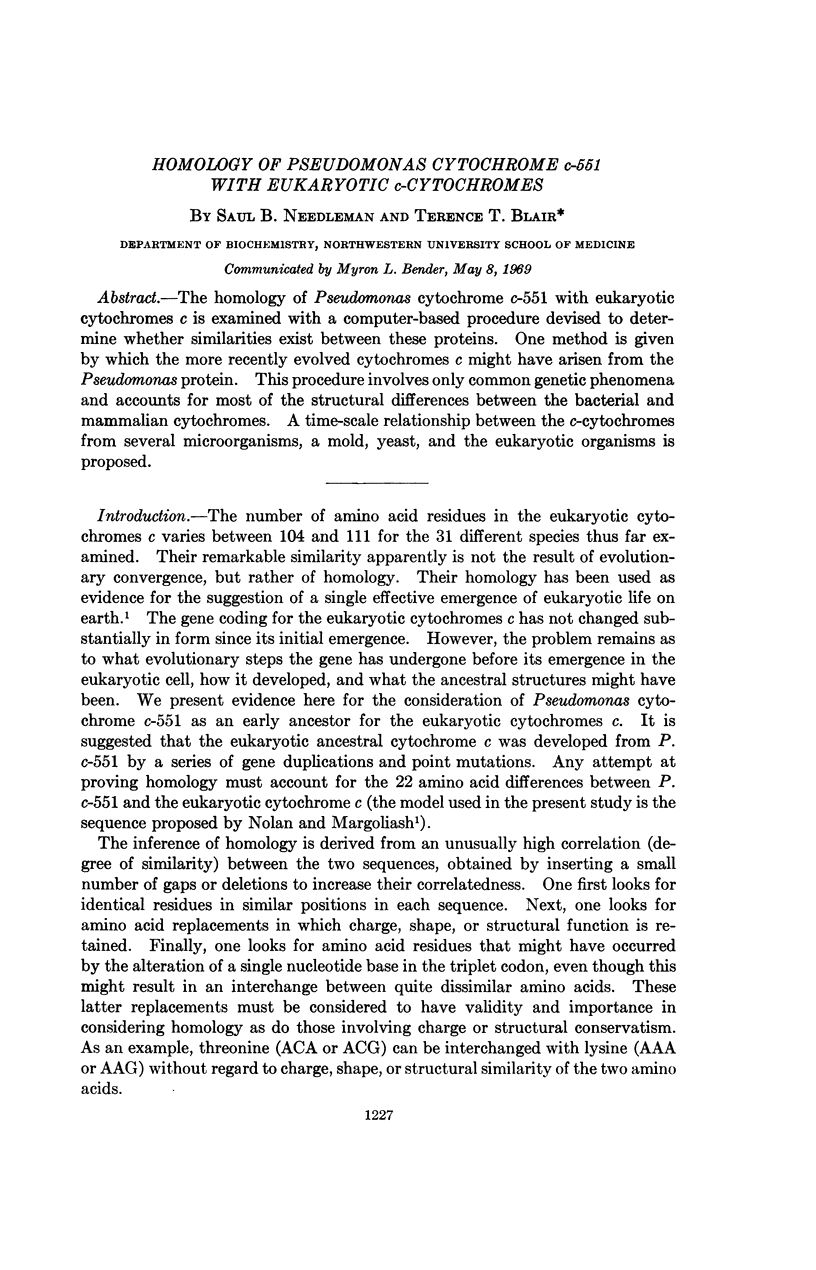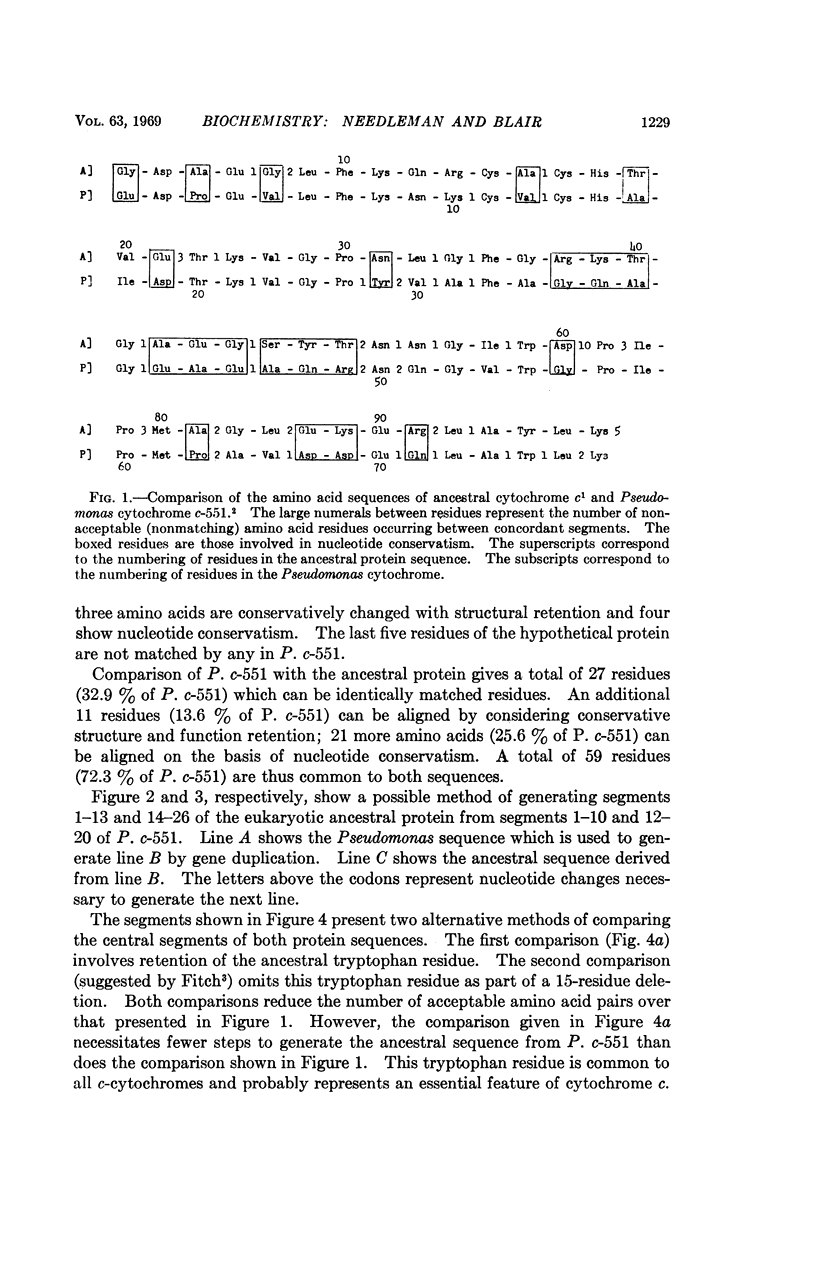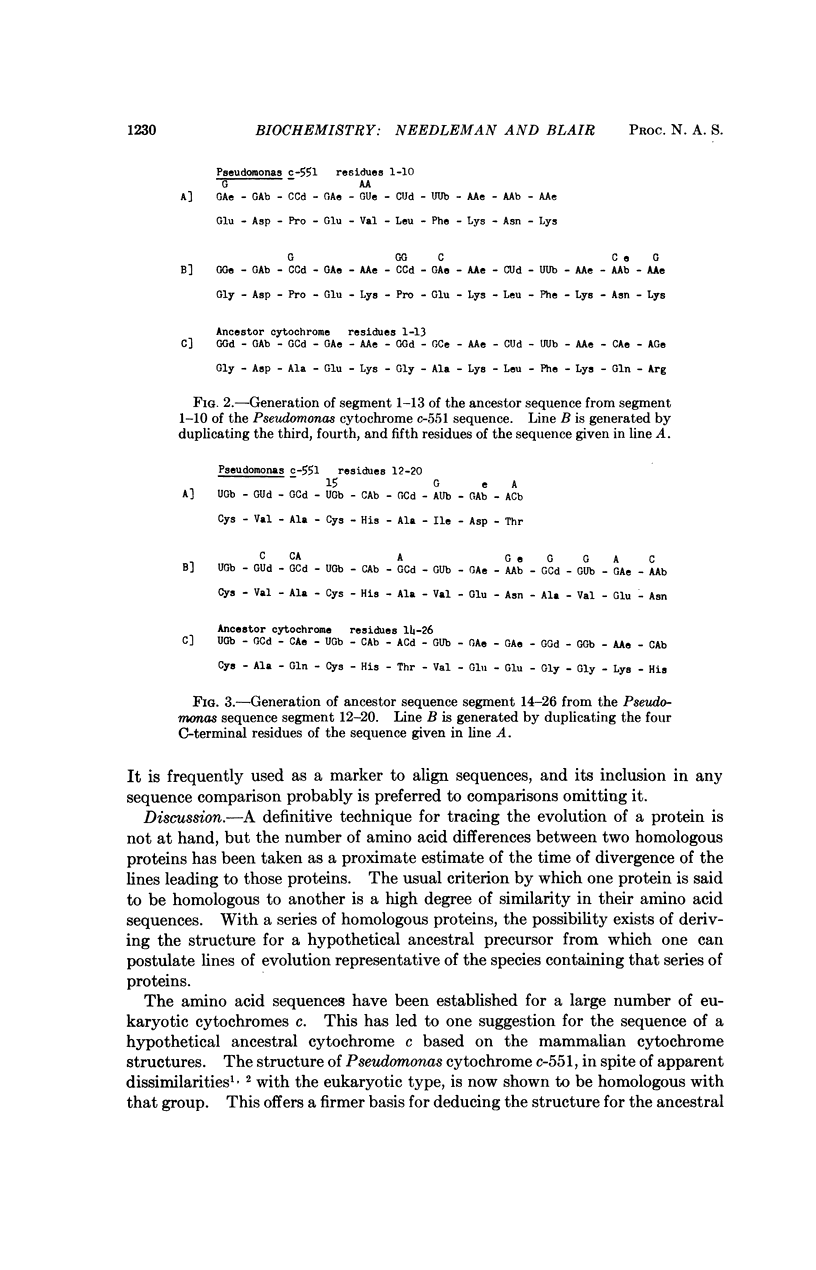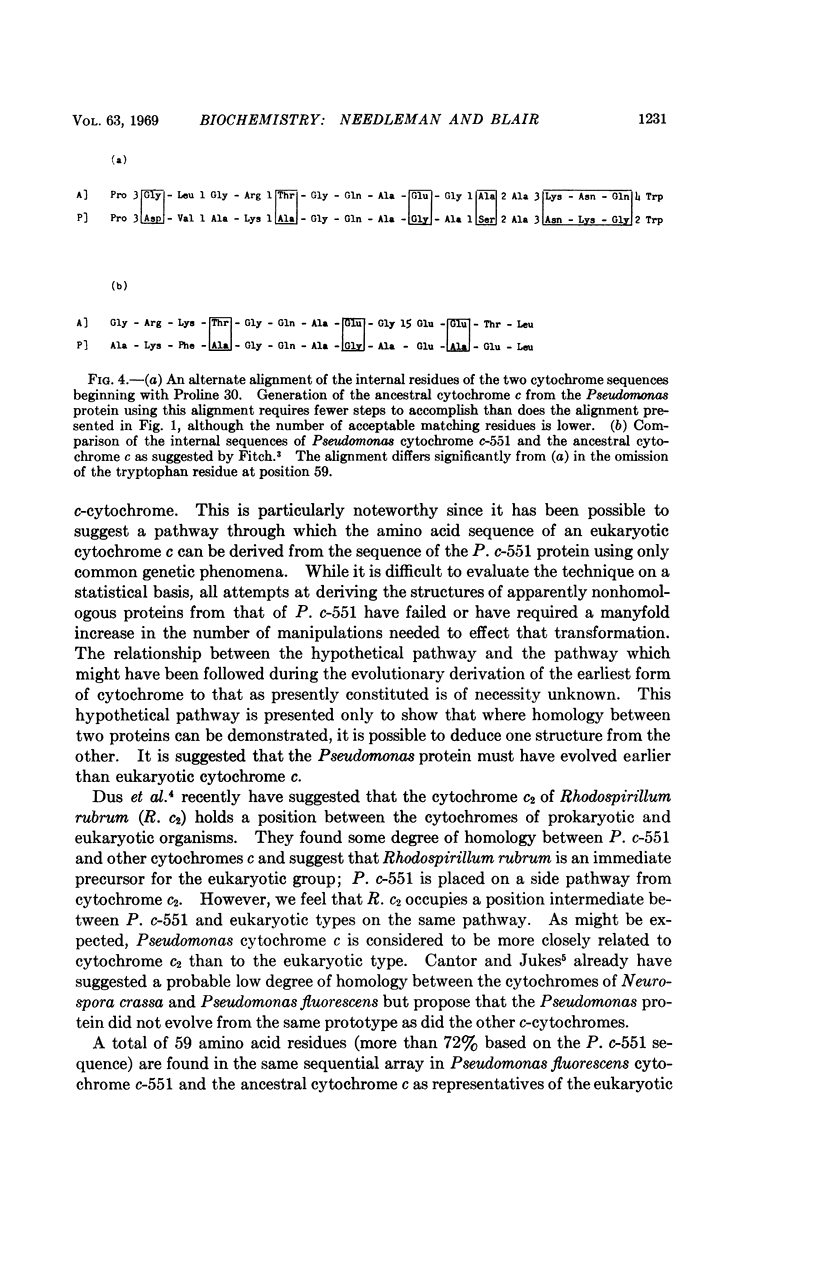Abstract
The homology of Pseudomonas cytochrome c-551 with eukaryotic cytochromes c is examined with a computer-based procedure devised to determine whether similarities exist between these proteins. One method is given by which the more recently evolved cytochromes c might have arisen from the Pseudomonas protein. This procedure involves only common genetic phenomena and accounts for most of the structural differences between the bacterial and mammalian cytochromes. A time-scale relationship between the c-cytochromes from several microorganisms, a mold, yeast, and the eukaryotic organisms is proposed.
Full text
PDF






Selected References
These references are in PubMed. This may not be the complete list of references from this article.
- AMBLER R. P. THE AMINO ACID SEQUENCE OF PSEUDOMONAS CYTOCHROME C-551. Biochem J. 1963 Nov;89:349–378. doi: 10.1042/bj0890349. [DOI] [PMC free article] [PubMed] [Google Scholar]
- Cantor C. R., Jukes T. H. The repetition of homologous sequences in the polypetide chains of certain cytochromes and globins. Proc Natl Acad Sci U S A. 1966 Jul;56(1):177–184. doi: 10.1073/pnas.56.1.177. [DOI] [PMC free article] [PubMed] [Google Scholar]
- Dus K., Sletten K., Kamen M. D. Cytochrome c2 of Rhodospirillum rubrum. II. Complete amino acid sequence and phylogenetic relationships. J Biol Chem. 1968 Oct 25;243(20):5507–5518. [PubMed] [Google Scholar]
- Eck R. V., Dayhoff M. O. Evolution of the structure of ferredoxin based on living relics of primitive amino Acid sequences. Science. 1966 Apr 15;152(3720):363–366. doi: 10.1126/science.152.3720.363. [DOI] [PubMed] [Google Scholar]
- Fitch W. M., Margoliash E. A method for estimating the number of invariant amino acid coding positions in a gene using cytochrome c as a model case. Biochem Genet. 1967 Jun;1(1):65–71. doi: 10.1007/BF00487738. [DOI] [PubMed] [Google Scholar]


